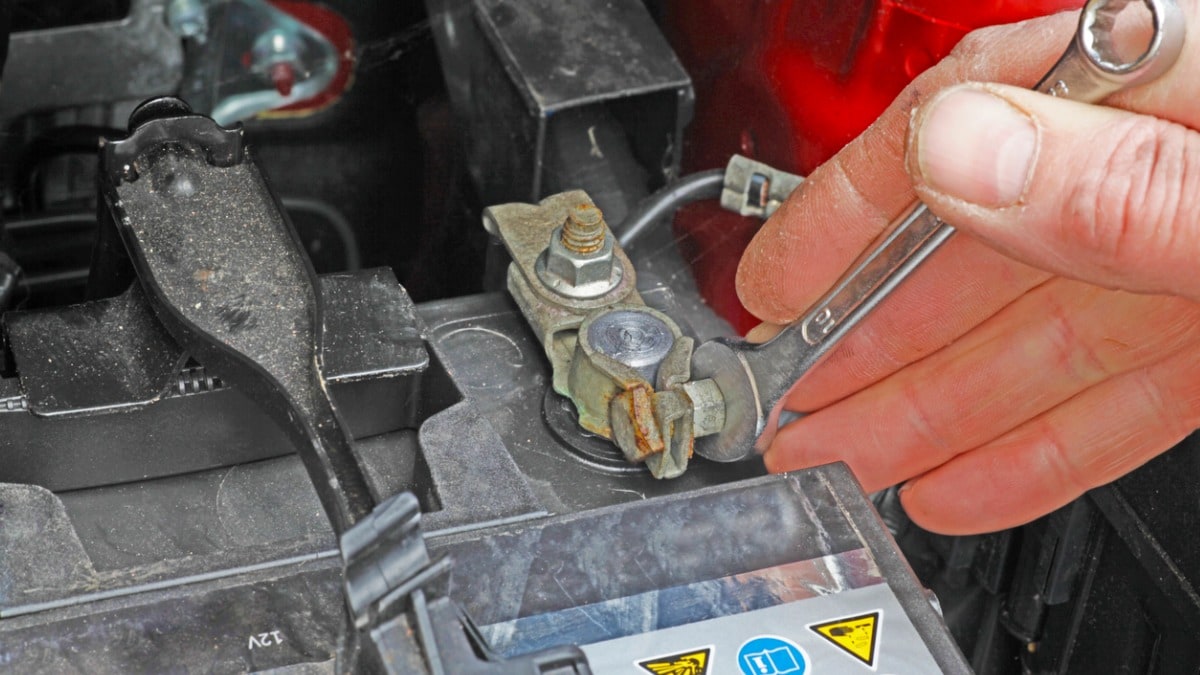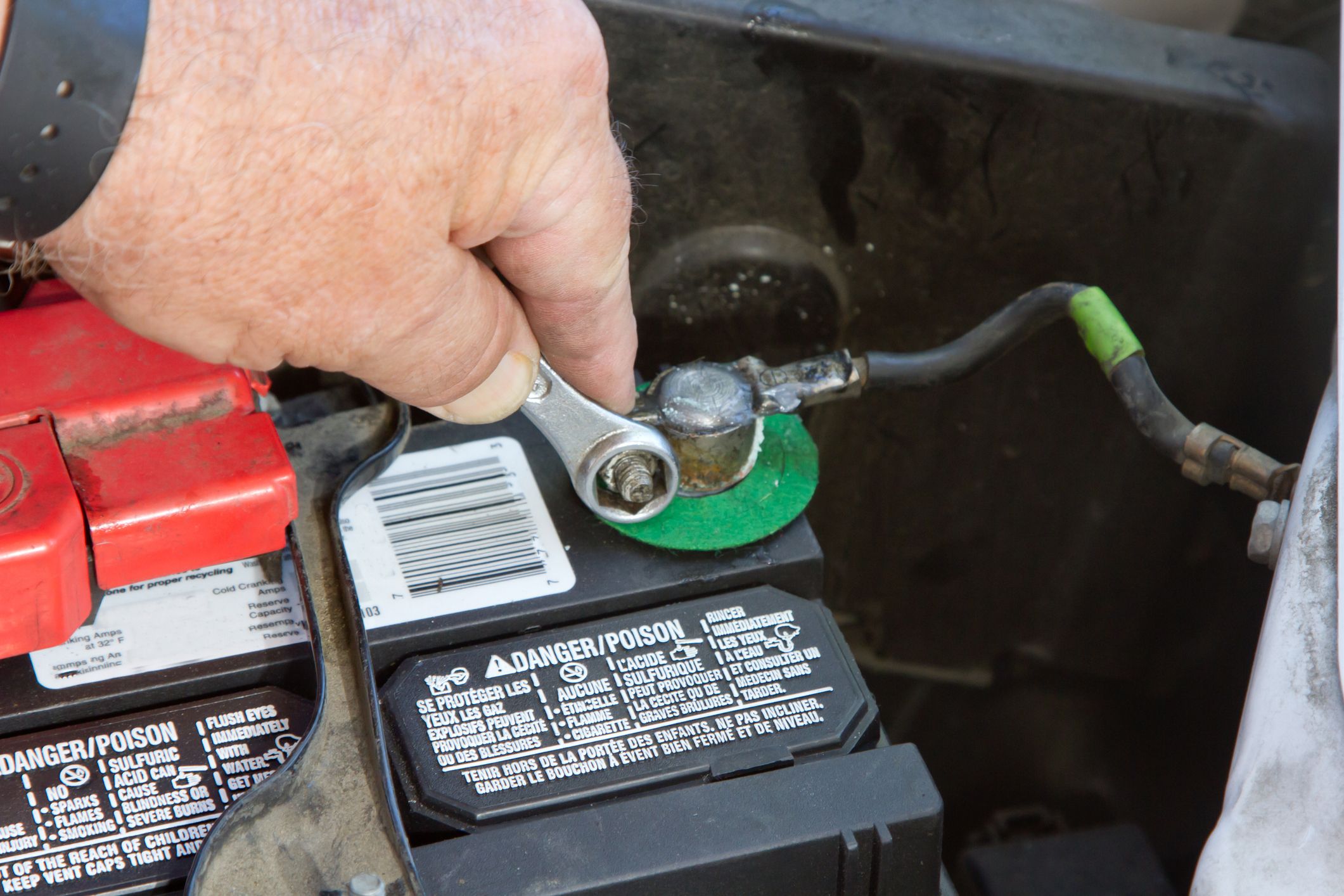Disconnecting a car battery is simple. First, ensure safety by turning off the car.
Next, locate the battery. If you need to disconnect your car battery, you might wonder how to do it safely. Knowing the right steps can protect you and your vehicle. Disconnecting the battery is essential for many car maintenance tasks.
It can prevent electrical shorts, save your car’s electronics, and keep you safe from shocks. This guide will walk you through each step, making the process easy and straightforward. Follow along to learn the right way to disconnect your car battery without any hassle.
Preparation
Gather necessary tools like gloves and a wrench. Turn off the engine and locate the battery. Disconnect the negative cable first, then the positive.
Before disconnecting your car battery, preparation is key. Proper preparation ensures safety and efficiency. This section will guide you through the steps needed to prepare.Gather Tools
First, gather all the necessary tools. You will need a wrench or socket set. Ensure these tools fit the battery terminals. Also, have safety gloves and goggles on hand. They protect you from possible sparks and acid.Ensure Safety
Safety is crucial when working with car batteries. Wear safety gloves to protect your hands. Safety goggles protect your eyes from any acid splash. Make sure the car is turned off. Remove the keys from the ignition. This prevents any accidental electrical issues. Double-check the area around the battery. Ensure there are no flammable materials nearby. By gathering tools and ensuring safety, you can disconnect the car battery safely and efficiently. “`
Credit: www.youtube.com
Locate The Battery
Disconnecting a car battery is an essential skill for any vehicle owner. Knowing how to locate the battery is the first step in this process. This section will guide you through opening the hood and identifying the battery in your car.
Open The Hood
First, you need to open the hood of your car. Look for the hood release lever inside the vehicle. This lever is usually located near the driver’s side footwell. Pull the lever to release the hood latch.
Next, go to the front of the car and find the secondary latch under the hood. Push or lift the latch to fully open the hood. Use the hood prop rod to keep the hood open. This ensures safety while you work.
Identify The Battery
Once the hood is open, you need to identify the battery. The battery is usually a rectangular box with two cables attached. It is often located near the front of the engine bay. Look for a label that indicates the battery’s position. The label may say “battery” or show a battery symbol.
If you cannot find the battery, refer to your car’s manual. The manual will provide specific details about the battery’s location. In some vehicles, the battery may be under a cover or in the trunk.
Once you have located the battery, you are ready to disconnect it. Make sure you have the proper tools, such as a wrench or pliers. Always wear safety gloves and goggles to protect yourself.
Disconnect Negative Terminal
Disconnecting the car battery is crucial for many DIY car repairs. The first step is to disconnect the negative terminal. This ensures the electrical system is safe to work on. Follow these steps to do it correctly.
Loosen The Nut
Locate the negative terminal on the battery. It usually has a black cable. Use a wrench to loosen the nut on the negative terminal. Turn the wrench counterclockwise. Loosen it enough to remove the cable.
Remove The Cable
After loosening the nut, gently pull the cable off the terminal. Avoid touching the positive terminal during this step. Place the cable away from the battery. Ensure it does not touch any metal parts. This prevents accidental reconnection.

Credit: www.kbb.com
Disconnect Positive Terminal
Disconnecting the positive terminal of your car battery is an essential step in various car maintenance tasks. It ensures safety and prevents electrical shorts. Follow these steps to properly disconnect the positive terminal.
Loosen The Nut
First, find the positive terminal. It usually has a red cover or a plus sign. Use a wrench to loosen the nut on the positive terminal. Turn the wrench counterclockwise to loosen it. Do not remove the nut completely.
Remove The Cable
After loosening the nut, carefully pull the cable away from the terminal. Do not force it. If it is stuck, gently twist it to loosen it. Once removed, place the cable away from the battery. Ensure it does not touch any metal parts. This prevents accidental connections.
Remove The Battery
Removing the car battery is an essential step in car maintenance. It’s crucial to follow safety measures and handle the battery with care. This section will guide you through the process.
Lift Carefully
After you have disconnected the battery cables, you need to lift the battery. It can be heavy and awkward to handle. Use both hands and maintain a firm grip.
- Ensure you are standing in a stable position.
- Bend your knees slightly to avoid strain on your back.
- Lift the battery slowly and steadily.
Place On A Safe Surface
Once you have lifted the battery, place it on a safe surface. The surface should be flat and stable.
- Avoid placing it on flammable materials.
- Keep it away from children and pets.
- Store it in a cool, dry place.
By handling the battery with care and storing it safely, you prevent accidents and ensure a longer battery life.
Clean Battery Terminals
Disconnecting a car battery involves more than just removing the cables. It’s also essential to clean the battery terminals to ensure a good connection. Dirty terminals can lead to poor battery performance. Follow these steps to clean them properly.
Use A Brush
First, you need to get a wire brush. This tool helps remove any corrosion on the terminals. Corrosion looks like a white, ashy substance.
Gently scrub the terminals with the brush. Use circular motions for best results. Don’t apply too much pressure to avoid damaging the terminals.
Apply Cleaning Solution
Next, prepare a cleaning solution. Mix one tablespoon of baking soda with one cup of water. Baking soda neutralizes battery acid effectively.
Dip an old toothbrush into the solution. Apply it to the terminals and let it sit for a few minutes. This helps break down any remaining dirt or corrosion.
After a few minutes, scrub the terminals again with the brush. Rinse them with clean water to remove the solution. Finally, dry the terminals with a clean cloth.
Install New Battery
After safely removing the old battery, it’s time to install the new one. This process involves positioning the battery correctly and securing it with clamps. Ensuring the new battery is installed properly guarantees your car will start and run smoothly. Follow these steps to make sure everything is in place.
Position The Battery
First, make sure the battery tray is clean and free from corrosion. Use a wire brush or a battery cleaner to remove any dirt or residue.
Now, carefully place the new battery in the tray. Ensure that the positive and negative terminals are on the correct sides. The positive terminal should be on the side where the red cable will connect, and the negative terminal should be on the side where the black cable will connect.
| Step | Action |
|---|---|
| 1 | Clean the battery tray |
| 2 | Place the new battery in the tray |
| 3 | Ensure terminals are correctly positioned |
Secure With Clamps
Next, secure the battery with the clamps. This step is crucial to keep the battery from moving while driving.
- Locate the battery clamps in your car.
- Use a wrench to tighten the clamps around the battery.
- Make sure the battery is firmly in place.
After securing the battery, connect the positive cable first, followed by the negative cable. Tighten the cable connections to ensure they are secure.
These steps ensure your new battery is installed correctly. Your car should now be ready to start and run smoothly.
Reconnect Terminals
Reconnecting the car battery terminals is a crucial step. It ensures the car runs smoothly. You need to follow specific steps. Start by attaching the positive cable. Then, move to the negative cable. Let’s dive into the details.
Attach Positive Cable
First, find the positive cable. It usually has a red cover. Carefully place it on the positive terminal. Ensure it fits snugly. Tighten the clamp with a wrench. Make sure there is no movement.
Attach Negative Cable
Next, locate the negative cable. It often has a black cover. Place it on the negative terminal. Confirm the fit is secure. Tighten the clamp using a wrench. Check for any movement. Ensure everything is tight.
Final Checks
Once you have disconnected the car battery, the process isn’t over yet. Final checks ensure everything is in order. These steps confirm the battery is safe and ready for use. They are crucial for your vehicle’s performance.
Tighten Nuts
Ensure the nuts on the battery terminals are tight. Loose nuts can cause issues. Use a wrench to tighten them securely. Don’t over-tighten. This could damage the terminal. Just make sure they are snug.
Test The Battery
After tightening the nuts, test the battery. Use a multimeter for this. Check the voltage. It should read around 12.6 volts. If it’s lower, the battery might need charging. Testing helps you understand the battery’s health.

Credit: www.caranddriver.com
Frequently Asked Questions
What Tools Do I Need To Disconnect A Car Battery?
You will need a wrench or pliers, safety gloves, and safety glasses.
Which Battery Terminal Should I Disconnect First?
Always disconnect the negative terminal first. This prevents short circuits.
How Can I Identify The Negative Battery Terminal?
The negative terminal is usually black and marked with a minus (-) sign.
Can I Disconnect The Car Battery While The Engine Is Running?
No. Always turn off the engine before disconnecting the battery to avoid damage.
How Do I Safely Store A Disconnected Car Battery?
Store it in a cool, dry place. Keep it away from children and pets.
Conclusion
Disconnecting a car battery is a simple task. Follow the steps carefully. Ensure all tools are ready before starting. Always prioritize safety to avoid accidents. Disconnect the negative terminal first. Then, disconnect the positive terminal. Store the battery in a safe place.
Reconnect the battery in reverse order. Remember these tips for a smooth process. Regular maintenance can prolong your battery’s life. Following these guidelines keeps your car running efficiently. Keep learning and stay safe!
